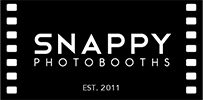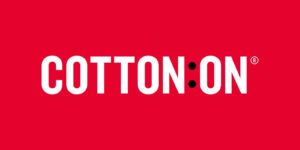In the ever-evolving landscape of event marketing and brand promotion, photo booths have emerged as a powerful tool for engaging audiences and creating memorable experiences. But how can businesses quantify the return on investment (ROI) of these installations? This article delves into the various metrics and methodologies used to measure the impact of photo booths on brand awareness and customer interaction.
The Rise of Photo Booths in Corporate Events
Photo booths have transcended their origins as novelty entertainment at weddings and parties to become a staple of corporate events, trade shows, and brand activations. According to a report by Grand View Research, the global photo booth market size was valued at $463.2 million in 2022 and is expected to grow at a compound annual growth rate (CAGR) of 7.8% from 2023 to 2030. This growth is driven in part by the increasing adoption of photo booths by businesses for [marketing purposes.
The appeal of photo booths lies in their ability to create interactive, shareable experiences that align with the modern consumer’s desire for personalisation and social media-friendly content. However, as with any marketing investment, businesses need to justify the expense by demonstrating tangible returns.
Key Performance Indicators (KPIs) for Photo Booth ROI
To effectively measure the ROI of photo booths, it’s crucial to establish clear Key Performance Indicators (KPIs) that align with your overall marketing objectives. Some common KPIs include:
- Number of booth interactions
- Photos taken and shared
- Social media impressions and engagement
- Lead generation and data collection
- Brand recall and sentiment
- Event attendance and dwell time
- Post-event conversions
Each of these KPIs contributes to a comprehensive understanding of how photo booths impact your brand and bottom line. For a deeper dive into setting effective KPIs, check out this guide on event marketing metrics
Quantifying Brand Awareness
Brand awareness is often considered a soft metric, but there are several ways to quantify the impact of photo booths on this crucial aspect of marketing:
Brand Recall Studies
Conduct surveys before and after the event to measure changes in brand recall. Ask participants to name brands in your industry and see if your brand’s mention rate increases post-event. SurveyMonkey offers tools for creating and analysing such surveys.
Branded Photo Analysis
Analyse the number of branded photos shared and their reach. Tools like Hootsuite or Sprout Social can help track the spread of your branded hashtags and images across social platforms.
Visual Brand Exposure
Calculate the total visual exposure time of your brand during the event. For example, if your logo is displayed for 5 seconds per photo, and 1000 photos are taken, that’s 5000 seconds of brand exposure. Learn more about[measuring brand exposure in the digital age.
Measuring Customer Engagement and Interaction
Customer engagement is a critical metric for evaluating the success of your photo booth installation. Here are some ways to measure it:
Booth Traffic
Use foot traffic counters or analysis of photo booth usage data to determine how many people interacted with your booth. Dor offers advanced foot traffic counting solutions.
Time Spent at Booth
Measure the average time spent by attendees at your photo booth. Longer engagement times often correlate with higher brand recall and positive sentiment. [Beacons and RFID technology can help track this metric accurately.
Repeat Visitors
Track the number of attendees who return to the booth multiple times, indicating a high level of engagement and enjoyment. Many photo booth software solutions offer this tracking feature.
User-Generated Content (UGC)
Monitor the amount and quality of UGC created through your photo booth. This can include not just the photos themselves but also social media posts, reviews, and mentions related to the experience. Stackla provides tools for tracking and leveraging UGC.
Social Media Reach and Virality
One of the most significant advantages of photo booths is their potential for viral social media reach. Here’s how to measure this impact:
Social Shares
Track the number of times photos are shared directly from the booth to social media platforms. Many modern photo booth systems offer integrated sharing features that make this data easily accessible. [Snapbar](https://www.thesnapbar.com/) is one such solution that provides detailed analytics.
Hashtag Performance
Monitor the use and reach of your event-specific hashtags. Tools like Keyhole or Talkwalker can provide detailed analytics on hashtag performance.
Engagement Rates
Analyse likes, comments, and shares on photos posted from your booth. Higher engagement rates indicate that the content resonates with audiences beyond just the event attendees. Socialbakers offers comprehensive social media analytics.
Follower Growth
Track increases in your social media followers during and after the event. A spike in followers can be attributed to the visibility gained through photo booth activations. Most social media platforms offer native analytics for business accounts.
Data Collection and Analysis
Photo booths are not just entertainment; they’re also powerful data collection tools. Here’s how to leverage this aspect:
Lead Generation
Measure the number of leads collected through the photo booth experience. This could include email addresses, phone numbers, or other contact information provided in exchange for photos or prises. Salesforce offers robust CRM solutions for managing and analysing these leads.
Demographic Insights
Analyse the demographic data of booth users to gain insights into your audience. This information can inform future marketing strategies and product development. Google Analytics can be integrated with your photo sharing platform for in-depth demographic analysis.
Preference Tracking
Use interactive elements in your photo booth (e.g., choice of backgrounds or props) to gather data on customer preferences and trends. Tableau is an excellent tool for visualising and analysing this data.
Long-term Impact on Customer Relationships
While immediate metrics are important, the true value of photo booth activations often lies in their long-term impact on customer relationships:
Customer Lifetime Value (CLV)
Track changes in CLV for customers who interacted with your photo booth compared to those who didn’t. This may require integration with your CRM system and long-term analysis. Learn more about calculating and improving CLV.
Brand Loyalty Metrics
Monitor changes in repeat purchase rates, referrals, and other loyalty indicators among event attendees. Loyalty programs can be integrated with photo booth experiences to track these metrics.
Net Promoter Score (NPS)
Conduct NPS surveys before and after the event to measure changes in customer sentiment and likelihood to recommend your brand. Qualtrics offers comprehensive NPS survey and analysis tools.
Challenges in Measuring Photo Booth ROI
While the benefits of photo booths can be significant, there are challenges in accurately measuring their ROI:
- Attribution: Determining which sales or leads are directly attributable to the photo booth experience can be difficult. Multi-touch attribution models can help address this challenge.
- Long-term effects: Some benefits, like increased brand loyalty, may not be immediately apparent. Longitudinal studies can help track these effects over time.
- Qualitative metrics: Factors like improved brand perception are important but challenging to quantify. Sentiment analysis tools can help measure these softer metrics.
- Data privacy concerns: Collecting user data must be done in compliance with regulations like GDPR. Ensure your data collection practices are compliant and transparent.
Best Practices for Maximising Photo Booth ROI
To get the most out of your photo booth investment, consider these best practices:
- Set clear objectives and KPIs before the event. Use SMART goal-setting techniques to ensure your objectives are measurable and achievable.
- Integrate photo booths with your overall event strategy and branding. Learn about effective event integration strategies.
- Use high-quality equipment and ensure a smooth user experience. TapSnap offers professional-grade photo booth solutions.
- Incorporate interactive elements that encourage sharing and virality. Augmented reality filters can boost engagement and sharing.
- Follow up with booth users post-event to nurture leads and gather feedback. Mailchimp offers powerful email marketing tools for follow-up campaigns.
- Continuously analyse data and refine your approach for future events. [Databox provides customisable dashboards for ongoing performance tracking.
As technology evolves, so too will the capabilities and applications of photo booths in marketing. Emerging trends include:
– AI-powered personalisation: IBM Watson offers AI solutions that could be integrated into photo booth experiences.
– Augmented reality (AR) integrations: Snapchat’s Lens Studio allows creation of custom AR filters.
– Integration with customer loyalty programs: Oracle’s loyalty cloud provides tools for integrating experiences with loyalty programs.
By staying ahead of these trends and consistently measuring the ROI of your photo booth activations, you can ensure that this powerful marketing tool continues to deliver value for your brand.
In conclusion, while measuring the ROI of photo booths requires a multifaceted approach, the potential benefits in terms of brand awareness, customer engagement, and data collection make it a worthwhile investment for many businesses. By setting clear objectives, tracking relevant KPIs, and analysing both short-term and long-term impacts, companies can leverage photo booths as a key component of their event marketing strategy.























































